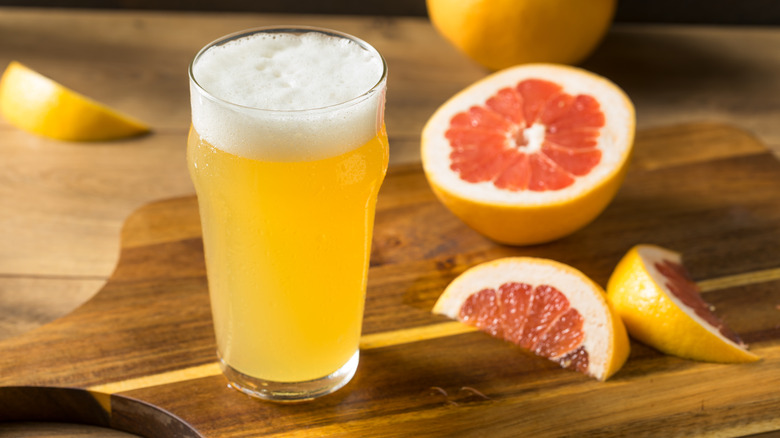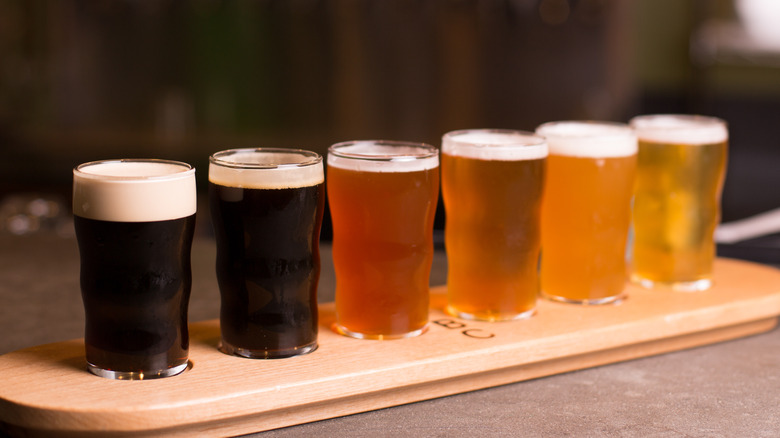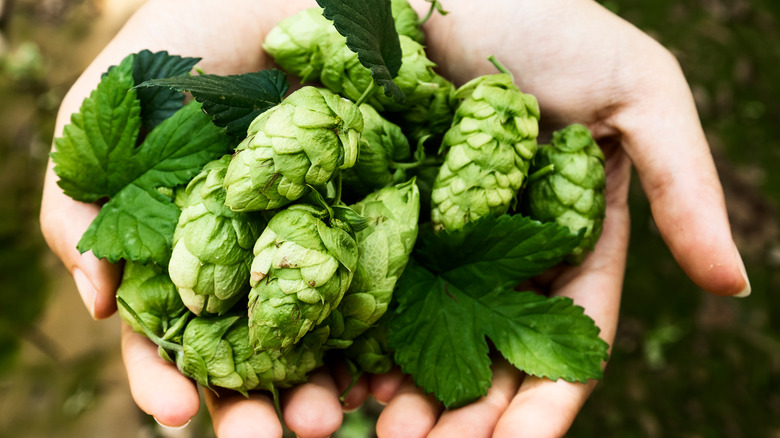Why You Should Add Fruit To Your IPA
Remember back in the mid-2000s when Miller Lite ran the "Man Laws" campaign? Remember the "law" about not putting fruit in beer? Aside from a general premise that might have aged poorly for many modern readers, Miller Lite (circa 2006) could not have been more off-base in their assertion that fruit and beer don't mix. Who could deny a Corona its lime wedge, or a Blue Moon its iconic orange wheel? More so, who could predict the explosion of craft brewing across the country in the years to come? Nowadays, it seems almost like a faux pas for any brewpub, taproom, or beer garden not to have at least a few fruited beers.
As the craft brewing market continues to hit all-time highs, per the Brewers Association, IPAs have taken up the mantle as a go-to beer style for burgeoning craft brewers in the U.S. And as illustrated by Tap Trail, IPAs have also become increasingly associated with the trend of adding fruit to beer. Though we are in love with the results, it begs the question: Why are IPAs so frequently paired with fruit? And why should you try fruit in your IPA?
What's the deal with IPAs?
To figure out why IPAs are great with fruit, we first need to understand IPAs themselves. For starters, Beer Hawk explains, IPA stands for India Pale Ale; the name refers to its purported popularity as an English-exported pale ale shipped to British-occupied India. A pale ale is simply an ale that's made with lighter malts than other types of beer like a brown ale, porter, or stout, says the Wild Beer Company; the result is a distinct body and flavor as well as a lighter coloration.
What sets an IPA apart from other styles of pale ale is the greater amount of hops used during the beer-making process, says MasterClass. What are hops, you might ask? At least half the flavor! According to Craft Beer, pale ales typically derive their baseline tastes from the balance of two main sources: the malt (richness and body) and the hops (bitterness and aromatics). More specifically, it's the buds of the Humulus lupulus plant that add a variety of fruity, floral, earthy, and herbal flavors and aromas to beer, and more so IPAs, depending on the type and quantity of hops used (as highlighted by Sierra Nevada).
In the early days of IPAs, according to Beer Hawk, hops were said to be used as a preservative to ensure that beer traveling from England made it to India without spoiling. The result was a refreshing, bold, and aromatic beer with an international consumer audience. In more recent years as craft beer surged, brewers began experimenting with varietals of hops such as Citra, Galaxy, and Cascade, as well as cross-pollinating hop plants to create new flavor profiles.
Hopping onto the fruit IPA trend
As the brewers of the craft beer revolution explored the nuance of hops, they started adding fruit to their hops-heavy IPAs to emphasize the more subtle natural flavors — floral and citrus notes, for example — of their highly sought-after varietals. Journalist and beer aficionado Joshua M. Bernstein asserts to Thrillist that adding fruit to your IPA as a brewer also helps with branding. For consumers who aren't too familiar with hops varietals, it may be hard to know just what to expect from an IPA. But with a label like Samuel Adams' Rebel Grapefruit IPA or the Aprihop IPA by Dogfish Head, novice IPA drinkers can know (almost) exactly what they're getting into with their beer selection.
Adding fruit to IPAs just makes them easier to drink in general, rendering a heavily-hopped beer more palatable (especially for beginners), creating a depth of flavor, and carving out a niche market for up-and-coming brewers — thereby encouraging more of them to go forth and try new things. And we applaud them for it; without craft brewers trying unexplored and innovative techniques with hops, malts, and fruits, we wouldn't have the eclectic beer culture present in taprooms, brewpubs, and beer gardens around the world today.


